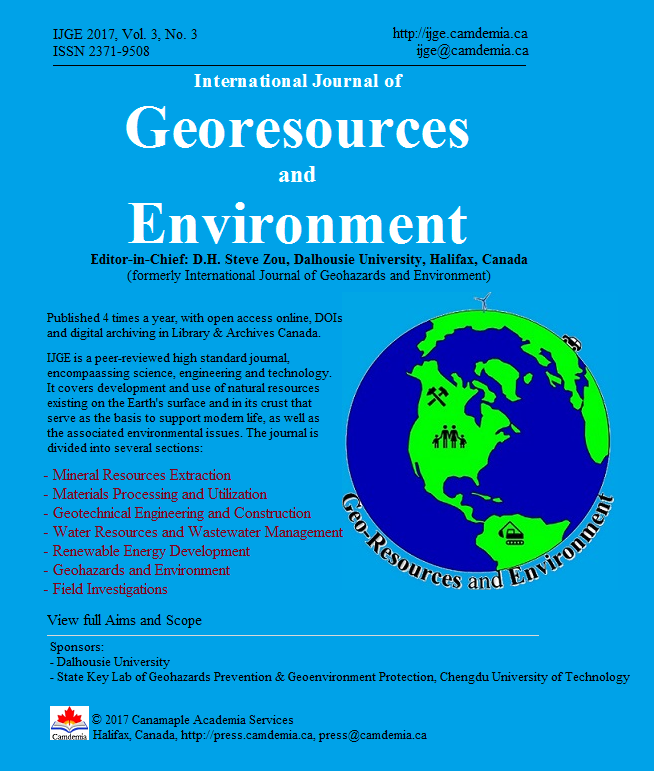Research on the Characteristics of Monitoring Data of Zipingpu High Gas Tunnel: Analysis and Prediction
DOI:
https://doi.org/10.15273/ijge.2017.03.010Keywords:
gas tunnel, dynamic monitoring, data analysis, fuzzy recognition, prediction modelAbstract
The Zipingpu tunnel is a high gas tunnel, located in the expressway section of national highway 317 from Dujiangyan to Wenchuan in Sichuan province. During its construction, gas explosion occurred many times, including a serious explosion. On the basis of summarizing the existing gas tunnel construction experiences, the Zipingpu tunnel adopted a “double insurance” scheme, which combined automatic monitoring with manual test to build a real-time and continuous gas concentration monitoring system in the tunnel. By analyzing a large number of monitoring data, it is concluded that the main factors which affect the gas concentration are tunneling blasting, ventilation condition and geological structure. Furthermore, the classification and prediction model of gas monitoring data are proposed. The predicted results obtained from the model are consistent with the measured data. This work can provide reference for other gas tunnel projects.Downloads
Issue
Section
License
Copyright, Terms and Conditions
The International Journal of Geohazards and Environment (the Journal) is published by Canamaple Academia Services (the Publisher) online with open access, under a Creative Commons Attribution-Noncommercial license (CC-BY-NC) (http://creativecommons.org/licenses/by-nc/4.0/). Authors (the Authors) submitting papers (the Work) for publication in the Journal automatically agree to the following terms and conditions.
1. Under the license (CC-BY-NC), Authors give permission for others to share and reuse the Work, as long as the original source and author(s) are properly cited (i.e. a complete bibliographic citation and link to the Journal website) and the material is not used for commercial purposes. Any sharing or reuse must however indicate the original CC-BY-NC license terms of the work.
2. Authors transfer and assign to the Publisher all copyright in and to the Work. However Authors retain all proprietary rights except the copyright, related to the Work and also retain the rights a) to use, reproduce, distribute, and publicly display the Work in any medium in connection with the Authors‘ academic and professional activities, such as teaching, presentations and lectures, b) to create derivative works from the Work and to make full use of the Work in future research and publications, c) to authorize others to make any non-commercial use of the Work, d) to make both the pre-published and final-published versions available online in institutional and/or disciplinary repositories or on their own websites with a citation and link to the original paper published in the Journal.
3. Authors warrant that the Work is their original work, it is not copied from anywhere or anyone else, they are totally responsible for the authenticity, originality, validity and accuracy, and the facts and views are their own, that the Work contains no matter which is defamatory or infringes any literary or proprietary rights, intellectual property rights, or any rights of privacy, and that the Work has not been simultaneously submitted to any other journals or publishers. Authors further agree that their manuscripts whether accepted or rejected will not be returned and the rejected manuscripts will be disposed at the journal editor's discretion.
Disclaimer: The Publisher, the Journal and the editors accept no responsibility for statements or opinions expressed by authors. Use of information and materials in the Journal is the sole responsibility of users.


